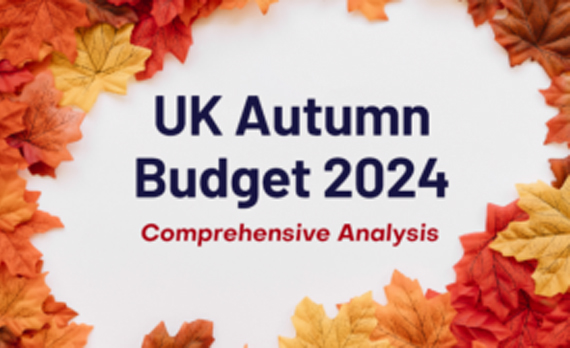- Introduction
- Overview of the Budget’s significance.
- Objectives and priorities of the government for the fiscal year.
- Economic Context
- Current economic landscape (inflation rates, GDP growth).
- Historical context and comparisons to previous budgets.
- Key Economic Forecasts
- Projections for GDP growth.
- Employment rates and wage growth expectations.
- Public Spending
- Breakdown of spending allocations.
- Areas of increased funding (healthcare, education, infrastructure).
- Tax Changes
- Overview of tax policy changes.
- Detailed analysis of income tax, corporation tax, VAT, and other relevant taxes.
- Implications for different income groups.
- Cost of Living Measures
- Initiatives aimed at supporting families and individuals.
- Specific programs and their anticipated impact on living standards.
- Investment in Green Technology
- Commitment to sustainability.
- Funding for renewable energy projects and climate initiatives.
- Business Support Measures
- Support for small and medium-sized enterprises (SMEs).
- Tax incentives, grants, and other initiatives.
- Pension and Welfare Reforms
- Changes to pension contributions and welfare programs.
- Impact on retirement savings and vulnerable populations.
- Infrastructure Projects
- Major infrastructure investments planned.
- Potential economic impact and job creation.
- Debt Management Strategies
- Plans for managing national debt.
- Long-term fiscal responsibility measures.
- Regional Development Initiatives
- Focus on levelling up across the UK.
- Specific investments in underserved areas.
- Conclusion
- Summary of key points.
- Implications for the UK economy moving forward.
Detailed Sections

1. Introduction
The UK Budget 2024 is a pivotal moment for the government, outlining fiscal policies and economic strategies aimed at navigating ongoing challenges and setting the stage for future growth. This budget not only addresses immediate economic pressures but also reflects the government’s long-term vision for a resilient and sustainable economy.
2. Economic Context
The UK economy has faced various challenges, including inflationary pressures and slow growth. As of late 2023, inflation rates have been fluctuating, impacting consumer confidence and spending. Historical comparisons reveal how current policies are adapted from previous fiscal responses, particularly in light of the COVID-19 pandemic and subsequent recovery phases.
3. Key Economic Forecasts
The government has adjusted its forecasts for economic growth, with GDP expected to grow by approximately X% in 2024. Employment is projected to remain stable, with a slight increase in wage growth anticipated due to new labor policies and increased minimum wages.
4. Public Spending
Public spending in 2024 is set to increase significantly, with major allocations directed toward healthcare, education, and infrastructure. For instance, the National Health Service (NHS) is receiving an additional £X billion, which aims to enhance services and reduce waiting times.
5. Tax Changes
This section will detail the proposed changes to various tax rates. For example, the income tax threshold may be adjusted, benefiting low-to-middle-income earners. Corporation tax could see an increase to ensure businesses contribute fairly to public finances. The implications of these changes on disposable income and business investments will also be analyzed.
6. Cost of Living Measures
Recognizing the pressures faced by households, the government has introduced a series of measures designed to alleviate the cost of living. These include targeted support programs for low-income families, adjustments to welfare payments, and energy price caps to assist consumers.
7. Investment in Green Technology
The commitment to environmental sustainability is a cornerstone of the 2024 budget. The government has allocated £X billion for renewable energy projects, including wind and solar initiatives, and aims to meet ambitious climate targets while promoting job creation in green industries.
8. Business Support Measures
SMEs are vital to the UK economy, and the 2024 budget includes measures such as tax reliefs and grants aimed at fostering growth in this sector. Specific initiatives include support for innovation and technology adoption, which are critical for enhancing competitiveness.
9. Pension and Welfare Reforms
Reforms to the pension system may include changes to contribution rates or eligibility requirements. These changes are designed to ensure long-term sustainability of pension funds and provide adequate support for retirees, while welfare reforms aim to streamline assistance programs for those in need.
10. Infrastructure Projects
The government has earmarked substantial funding for infrastructure development, focusing on transportation, housing, and digital connectivity. Projects like the expansion of rail networks and affordable housing initiatives are expected to stimulate economic activity and create jobs.
11. Debt Management Strategies
The budget outlines the government’s approach to managing national debt, emphasizing fiscal responsibility. Measures include a commitment to reduce the deficit over the next five years, with specific targets for debt-to-GDP ratios.
12. Regional Development Initiatives
The government’s “levelling up” agenda is evident in its focus on regional development. Investments will be targeted at areas historically underfunded, aiming to bridge economic gaps and promote equitable growth across the UK.
13. Conclusion
The UK Budget 2024 reflects a balanced approach to addressing immediate economic challenges while investing in long-term growth. The implications of these decisions will shape the UK economy in the coming years, influencing everything from individual livelihoods to national prosperity.



